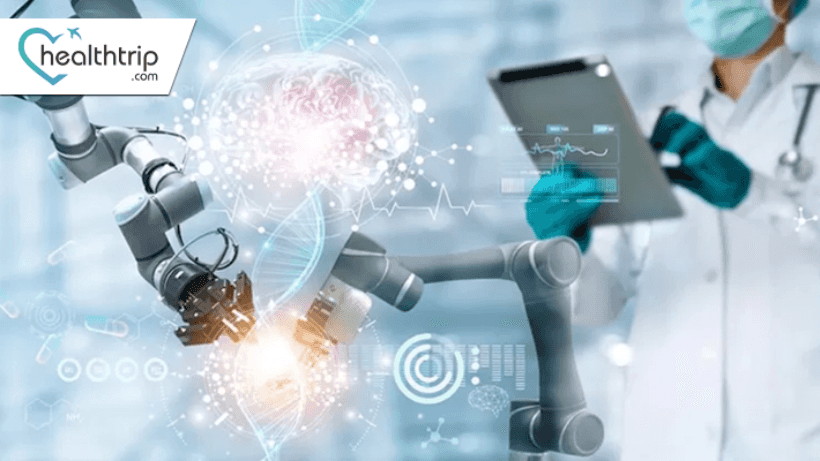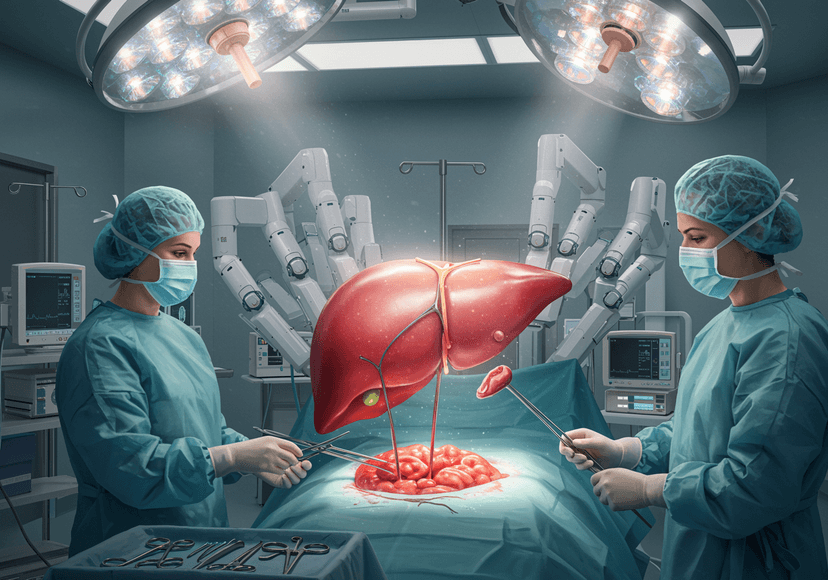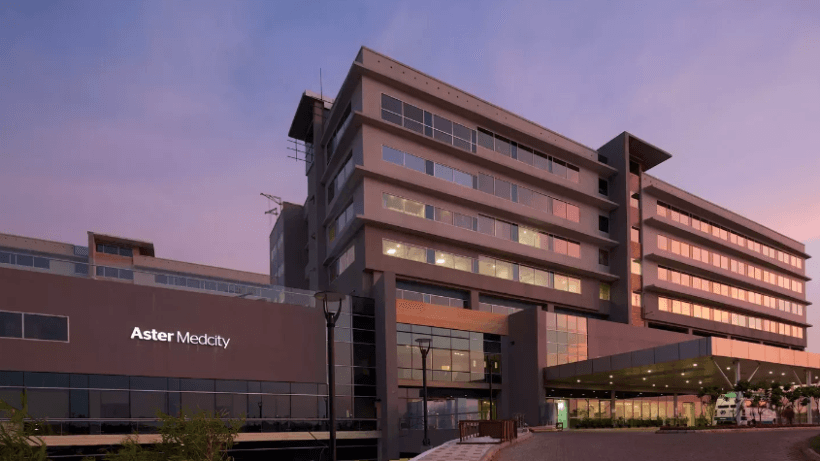
The Impact of AI on Surgical Procedures
08 Nov, 2023
 Healthtrip Team
Healthtrip TeamIn the hushed corridors of modern medicine, a silent revolution is taking place—one that wields the power of artificial intelligence to transform the age-old art of surgery. From the intricate dance of robot-assisted surgery to the keen eyes of AI algorithms that decipher medical images with unmatched precision, the impact of AI on surgical procedures is nothing short of extraordinary. In this blog, we embark on a journey through the operating rooms of the future, where AI is the silent, yet indispensable, surgical assistant. We will explore how AI is reshaping every facet of surgery, from meticulous preoperative planning to vigilant postoperative care. Get ready to witness the profound impact of AI on the world of scalpels and sutures.
Most popular procedures in India
1. Preoperative Planning and Imaging:
AI-driven preoperative planning tools have ushered in a new era in surgical preparation. These advanced tools leverage sophisticated algorithms to meticulously analyze various forms of medical imaging data, including CT scans, MRIs, and X-rays, with a level of precision that surpasses human capability. Here's a closer look at how AI makes an impact in this crucial stage:
a. Anomaly Detection: AI algorithms excel at identifying even the subtlest abnormalities that might elude human observation. This becomes particularly vital in early cancer detection, where AI can meticulously scan images, pinpointing suspicious areas that may warrant further investigation.
Wellness Treatments
Give yourself the time to relax
Lowest Prices Guaranteed!

Lowest Prices Guaranteed!
b. Tumor Detection: AI systems play a pivotal role in the precise detection of tumors. By accurately locating and measuring tumors, AI equips surgeons with critical information needed to plan the surgical intervention and determine the extent of the procedure required.
c. 3D Organ Modeling: AI's ability to construct intricate 3D models of a patient's organs is a game-changer. These models provide surgeons with a comprehensive and dynamic view of the patient's anatomy. They can be manipulated and explored from various angles, greatly enhancing the surgeon's ability to strategize and plan the surgical approach with utmost precision.
d. Virtual Reality (VR) and Augmented Reality (AR): Some AI-powered tools seamlessly integrate with VR and AR technologies, allowing surgeons to immerse themselves in a virtual representation of the patient's anatomy. This immersive experience enhances the surgeon's understanding of the complex structures they will encounter during surgery, resulting in more informed and precise surgical planning.
In essence, AI-driven preoperative planning tools are not just incremental advancements; they are revolutionary in their potential to enhance surgical precision, minimize the risk of complications, and ultimately elevate patient outcomes.
2. Robot-Assisted Surgery:
Robot-assisted surgery, propelled by the capabilities of AI, marks a monumental leap forward in the world of surgical procedures. Among the most renowned systems in this realm is the da Vinci Surgical System. Here's a closer examination of how it operates and its profound impact:
a. Enhanced Precision: Robotic arms possess an extraordinary degree of precision, making them ideal for executing delicate and intricate maneuvers during surgery. AI algorithms are instrumental in this regard, as they work in tandem with surgeons to control these robotic arms with unparalleled precision, surpassing what human hands alone could achieve.
b. Minimally Invasive Surgery: A hallmark of robot-assisted surgery is its commitment to minimally invasive techniques. This approach involves smaller incisions, translating to reduced postoperative pain, minimized scarring, shorter hospital stays, and faster recoveries compared to traditional open surgery.
c. Teleoperation: Some robot-assisted surgical systems offer teleoperation capabilities, allowing highly skilled surgeons to remotely perform procedures. This innovation has the potential to bridge geographical gaps in access to specialized surgical expertise, making advanced care available to remote or underserved regions.
d. Complex Procedures: Robot-assisted surgery shines brightest when tackling complex and intricate surgical procedures. Surgeries such as prostatectomies or cardiac interventions, where precision and dexterity are paramount, greatly benefit from the capabilities of AI-driven robotic systems.
The integration of AI and robotics in surgery not only expands the horizons of what can be achieved but also promises safer, more effective, and less invasive procedures.
3. Intraoperative Assistance:
AI's role in the surgical process extends far beyond the planning phase, providing invaluable support during the actual surgery itself. Here are the key facets of AI's intraoperative assistance:
a. Image-Guided Surgery: AI algorithms act as vigilant guides within the operating room, tracking the movements of surgical instruments and superimposing them onto preoperative imaging data in real time. This dynamic guidance assists surgeons by providing a continuous reference point, allowing them to navigate complex anatomical structures with exceptional precision and confidence.
b. Surgical Navigation: In addition to tracking instruments, AI systems offer 3D navigation capabilities that lead surgeons through intricate surgical pathways. This guidance significantly reduces the risk of inadvertent damage to surrounding tissues, ensuring that the surgery remains as minimally invasive as possible.
c. Vital Sign Monitoring: AI is the unwavering sentinel that keeps a watchful eye on the patient's vital signs throughout the surgical procedure. It continually monitors parameters such as heart rate, blood pressure, and oxygen levels, promptly alerting the surgical team to any irregularities. This real-time vigilance enables swift intervention in the event of unexpected complications, bolstering patient safety.
d. Autonomous Surgical Tools: In certain cases, AI-powered surgical instruments can operate autonomously under the surgeon's supervision. These tools are designed to execute specific surgical tasks, such as suturing or tissue removal, with impeccable precision and consistency.
4. Predictive Analytics and Decision Support:
AI's prowess in analyzing extensive patient data significantly elevates surgical decision-making processes. Here's a closer look at how AI impacts this vital aspect of surgery:
a. Data Integration: AI seamlessly integrates various sources of patient data, including electronic health records, laboratory results, medical imaging, and historical surgical outcomes. This amalgamation creates a comprehensive and cohesive view of the patient's health profile, empowering surgeons with a holistic understanding of their patient's condition.
b. Risk Assessment: AI algorithms come into play by predicting the probability of postoperative complications for individual patients. By harnessing the power of predictive analytics, surgeons can tailor their surgical approach to mitigate potential risks, ultimately enhancing patient safety and overall outcomes.
c. Optimized Planning: Armed with AI-generated insights, surgeons can embark on a path of optimized planning. This entails choosing the most suitable surgical technique, anesthesia approach, and postoperative care plan for each unique patient. The result is a truly personalized surgical experience, improving the chances of a successful and smooth recovery.
This data-driven decision support doesn't just stop at individual patient benefits; it also plays a pivotal role in the efficient allocation of healthcare resources, optimizing the broader healthcare system.
5. Postoperative Care and Recovery:
AI's sphere of influence extends well beyond the operating room, ensuring patients receive continuous care and support during their recovery phase. Here's a closer look at how AI transforms postoperative care and recovery
a. Remote Monitoring: AI-powered monitoring systems vigilantly track the progress of patients from afar. By continuously collecting and analyzing data, these systems can swiftly detect early signs of complications, enabling timely interventions. This remote oversight is particularly valuable in ensuring that patients experience a smooth and uneventful recovery.
b. Wearable Devices: Patients become active participants in their recovery journey through wearable devices enhanced with AI. These devices monitor vital signs, such as heart rate and oxygen levels, provide real-time feedback on adherence to postoperative care instructions, and offer timely reminders for medication intake and follow-up appointments. The result is a proactive and engaged approach to recovery, reducing the risk of complications and improving overall outcomes.
c. Rehabilitation: AI-driven rehabilitation programs provide a tailored and dynamic approach to postoperative recovery. These programs offer customized exercise plans and continuous feedback to patients, facilitating a more efficient and effective recuperation process. Patients can regain their mobility and strength more rapidly and with greater confidence.
AI's role in postoperative care is transformative, ensuring not only a more successful recovery but also reducing the likelihood of hospital readmissions and postoperative complications.
6. Education and Training:
AI is at the forefront of reshaping surgical education and training, providing trainee surgeons with immersive and realistic experiences:
a. Simulators: AI-driven surgical simulators create a safe and controlled environment for trainees to practice surgical procedures repeatedly. This iterative approach allows trainees to build confidence, refine their skills, and adapt to various scenarios. The result is a new generation of surgeons who are better prepared and more proficient.
b. Virtual Reality (VR): VR applications take surgical education to a whole new level by immersing trainee surgeons in highly realistic simulations of surgical scenarios. These simulations replicate surgical procedures with lifelike detail, providing an immersive and impactful learning experience.
c. Feedback and Assessment: AI doesn't just offer simulations; it also evaluates trainee performance objectively. AI algorithms analyze trainee actions, providing feedback on areas that need improvement. This data-driven approach enhances the effectiveness of surgical education, ensuring that trainees receive personalized guidance and coaching.
In essence, AI is revolutionizing surgical education, equipping the next generation of surgeons with the skills and confidence needed to excel in the complex world of modern surgery.
As we draw the surgical drapes on our exploration of AI's transformative influence on surgical procedures, one thing becomes abundantly clear—this marriage of technology and medicine is destined to redefine the boundaries of what's possible. From the delicate strokes of robot-assisted precision to the intricate dance of data-driven decision-making, AI has emerged as the steady hand guiding surgeons towards safer, more personalized, and ultimately, more successful outcomes. With AI continuously evolving and pushing the boundaries of innovation, the future of surgery holds the promise of a brighter, healthier world where the human touch and AI's precision combine to write a new chapter in the annals of medical history.
Related Blogs

Healthtrip's Advanced Liver Transplant Technology
Discover Healthtrip's state-of-the-art liver transplant facilities, boasting advanced technology and

Minimally Invasive Surgery Options in Thailand
Are you considering Hormone Replacement Therapy (HRT) and wondering about

Understanding Liver Transplants at Aster Medcity, Kochi
Introduction Aster Medcity in Kochi, Kerala, stands as a beacon of

The Latest Advances in Eyelid Surgery: What's New in the Field
The quest for rejuvenation and the pursuit of functionally sound

Inside Out: Understanding the Intricacies of Intestine Transplantation
Intestine transplant, at its core, involves the surgical replacement of

Robot-assisted Surgery: Types, Procedure & Cost
Robot-assisted surgery is a type of minimally invasive surgery that










